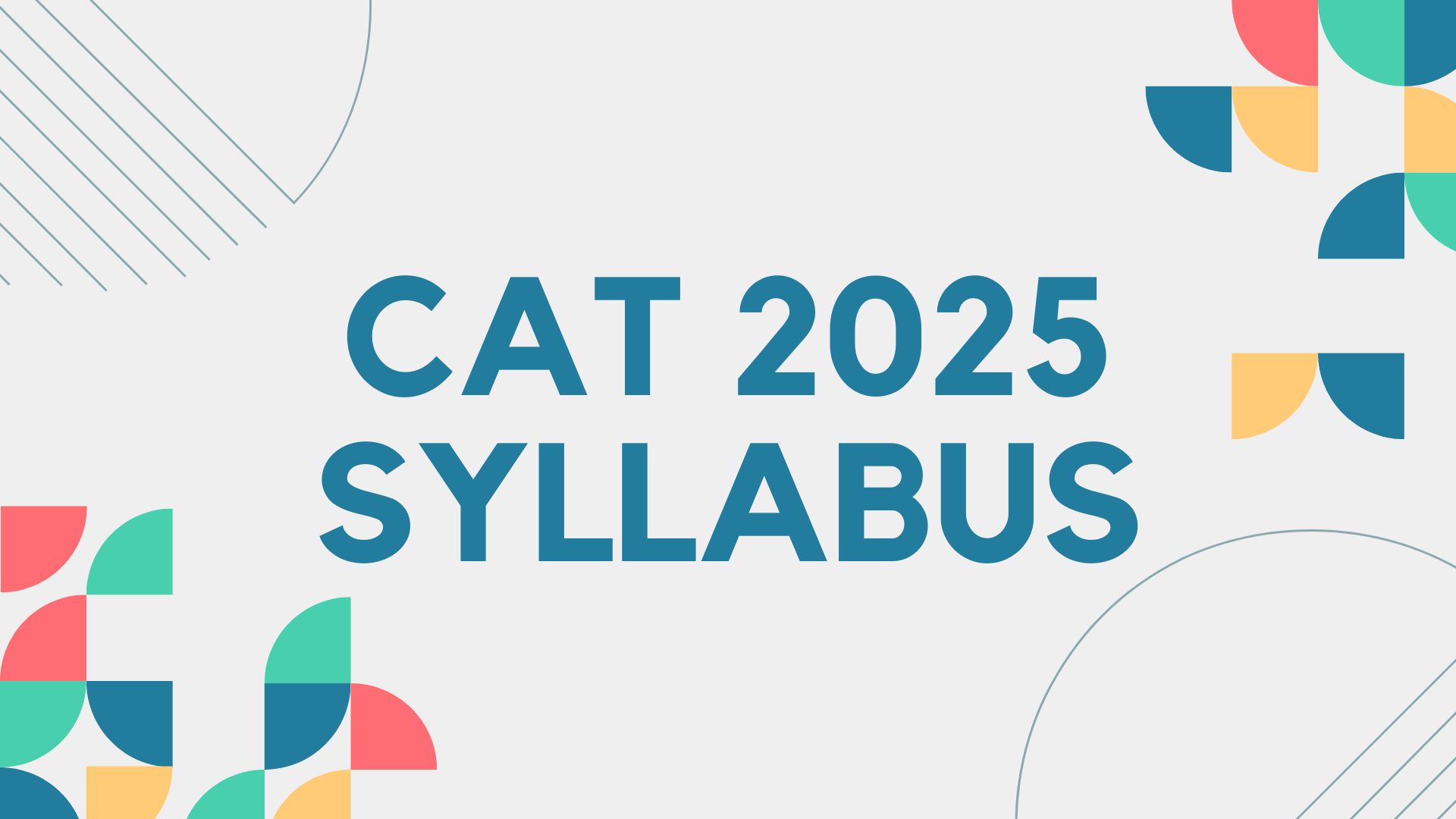The first step in CAT preparation is to have complete information and knowledge of the CAT syllabus. Furthermore, understanding your sectional strengths and weaknesses will assist you in developing an appropriate schedule and closing any remaining gaps.
The CAT consists of three sections. It includes both MCQ and non-MCQ questions, with penalties for incorrectly answering MCQs. CAT has three major sections: quantitative ability (QA), verbal ability and reading comprehension (VARC), and data interpretation and logical reasoning (DILR).
There is a great saying, “The whole purpose of education is to turn mirrors into windows.” If you want to turn the mirrors of entrance exams into windows to your dream business school, this article will help you!
You will learn about the entire CAT exam syllabus and the important topics in each section.
Before delving into the section-wise syllabus of the CAT exam, let us look at its pattern and marking scheme:
CAT Exam Syllabus
IIMs do not provide an official CAT syllabus. However, most topics are based on middle school Math and English concepts.
Although the syllabus is divided into three sections, the effective number of sections is five because VARC and DILR are separated into two sub-sections.
The Quant section covers math topics from grades 9 to 10, such as number system, geometry, mensuration, algebra, and arithmetic. The VARC syllabus covers reading comprehension, verbal reasoning, and grammar.
The DILR section includes sets based on Number Series, Graphs, Data Sufficiency, and common reasoning concepts.
| CAT Syllabus – Sections | Topics |
|---|---|
| Quantitative Ability (QA) | Modern Maths, Number System, Geometry, Mensuration, Algebra, Arithmetic |
| Verbal Ability & Reading Comprehension(VARC) | Para Jumbles, Para Summary, Long and Short Passages, Odd Sentence Out. |
| Data Interpretation & Logical Reasoning (DILR) | Seating Arrangements, Coding-Decoding, Team Formation, Clocks and Calendars, Venn Diagrams, Bar Graphs |
CAT Syllabus: Key Highlights
There have been frequent changes in the CAT pattern regarding the test structure, time duration, scoring scheme, and other key factors. These components are discussed below:
| Key Components | Pattern |
| No.of sections | 3 (VARC, QA, DILR) |
| Test Slots | 3 (Morning, Afternoon, Evening) |
| Time allotted for each section | 40 minutes |
| Total Test duration | 2 hours |
| Total Questions | 66 |
| Total Marks | 198 |
| Total questions in VARC Section | 24 |
| Total questions in QA Section | 22 |
| Total questions in DILR Section | 20 |
CAT Syllabus: Topic-wise weightage
Each topic has a different weightage in CAT. You can prioritize the sections and start your preparation accordingly. Keep track of the following topics asked in the CAT exam:
| Syllabus | Topics | Weightage |
| Verbal Ability | Para jumbles, Summary Based Questions, Sentence exclusion questions. | 8-10 questions |
| Reading Comprehension | RC passages | Out of 24 questions in the VARC section, 16 questions are from RC. |
| Quantitative Ability | Number System, Algebra, Geometry, Arithmetic, Mensuration. | Arithmetic and Algebra dominate the section with approx. 8 questions from each. |
| Data Interpretation & Logical Reasoning | Seating Arrangement, Reasoning Based DI, Grid-Based DI, Graphs. Tables, Data Caselets | There are 2 sets with a total of 10 questions in DI and 2 sets from LR. |
CAT Exam Pattern
The CAT exam pattern has changed in previous years, particularly due to the pandemic. Here’s a description of the CAT exam pattern:
| Sections | No. of Questions | Duration | Marks |
| Quantitative Ability (QA) | 22 | 40 minutes | 66 |
| Verbal Ability & Reading Comprehension(VARC) | 24 | 40 minutes | 72 |
| Data Interpretation & Logical Reasoning (DILR) | 20 | 40 minutes | 60 |
| Total | 66 | 120 minutes | 198 |
CAT Syllabus: Section-wise
Quantitative Aptitude (QA) Syllabus
The QA section contains 22 questions, 14 of which are non-MCQ questions. The aptitude syllabus is the largest of the three sections. As a result, the QA section takes up the majority of the time. Arithmetic and algebra are extremely important in quant. The CAT exam contains very few geometry-related topics.To ace the exam, make sure to review the following topics:
- Number systems; LCM and HCF; profit, loss, and discount; percentages; speed, time, and distance; time and work; simple and compound interest; Ratio and proportion; averages.
- Quadratic equations, linear equations, and complex numbers; Logarithm; Binomial Theorem; Sequences and Series; Surds and Indices; and Inequalities.
- Probability, permutation and combination, set theory, functions, mixtures, and alligation.
- Geometry, trigonometry, coordinate geometry, and mensuration.
QA Weightage
| Topics | Weightage(in Percentage) |
| Number System | 5% |
| Algebra | 32% |
| Arithmetic | 36% |
| Modern Math | 5% |
| Geometry and Mensuration | 23% |
Verbal Ability & Reading Comprehension (VARC) Syllabus
This section includes 24 questions, among which 19 questions are Non-MCQ questions. The Reading Comprehension questions are the majority. Following are the important topics of this section that needs to be prepared:
- Reading Comprehension: The exam has 16 RC questions and 4 passages.
- Paragraph Summary: This area has gained prominence over the last couple of years.
- Para-jumbles & Misfit Sentences: These two topics have become regular in the exam over the last couple of years.
Over 70% weightage of VARC is dedicated to RC questions only. It is to be noted that there were only 8 VA questions in CAT 2021, all of which were non-MCQs. Some other important areas are:
- Sentence Completion
- Verbal Reasoning: Fact-Inference-Judgement
- Grammar & Usage
- Vocabulary-based questions (mainly Fill in the blanks).
VARC Weightage
| Topics | Weightage (in Percentage) |
| Reading Comprehension | 80% |
| Para Summary | 15% |
| Para jumbles | 15% |
| Odd-Sentence Out | 10% |




